Ring Prong Settings The Detailed Overview Of This Important Feature
Every love partner offers a promise ring or stylish engagement ring in gemstones like moissanite and diamonds to represent their emotions and affection. All of the buyers want to maintain the hardness of the ring for a long time, but it needs a proper setting and it's a prong setting. The prong setting holds the gem hard and protects its surfaces, which leads to the proper and excellent grip of the overall formation.
Prong settings in rings have a long history and strike the perfect mix between highlighting the gemstone's beauty and offering a solid grasp. Engagement rings, wedding bands, and other priceless jewelry items continue to be set in prong settings because of their adaptability in fitting many gemstone shapes and design alternatives.
When carefully selected and maintained, a ring with a prong setting can serve as a timeless symbol of enduring love and beauty. It can bring an additional security level to the ring and offers a shield to the symmetry and surface of the gemstone, whether it's a brilliant moissanite or a natural diamond.
Table of Contents
Historical Importance Of Prongs Settings
The historical importance of prong settings in jewelry dates back centuries, with their evolution playing a significant role in shaping the world of gemstone adornment. Prong settings, characterized by small metal claws or prongs holding gemstones securely in place. It has profoundly impacted jewelry design, display, and the cultural significance of jewelry.
1. Origins and Early Use:
The origins of prong settings can be traced to ancient civilizations, where gemstones were first incorporated into jewelry for their aesthetic and symbolic value. Early craftsmen used rudimentary metal settings to encase gemstones, often without the precision and finesse of modern prong settings. These early efforts laid the foundation for developing more refined and functional prong settings.
2. Renaissance and the Birth of Prong Settings:
The true emergence of prong settings as we know them today can be attributed to the Renaissance period in Europe, which spanned from the 14th to the 17th century. During this era, there was a resurgence of interest in art, culture, and the sciences, leading to advancements in various fields, including jewelry design.
Jewelry artisans of the Renaissance recognized the intrinsic beauty of gemstones, particularly diamonds, and sought ways to enhance their brilliance. The innovation lay in using small, delicately crafted metal prongs that held the gemstones in place while allowing more light to enter and exit the stones. This breakthrough marked a pivotal moment in the history of jewelry design.
3. Baroque and Rococo Periods:
Prong settings gained further prominence as jewelry design continued to evolve through the Baroque and Rococo periods. These settings became integral to the intricate and ornate jewelry designs of the time. This era's jewelry was characterized by opulence, with prong settings contributing to the grandeur of the pieces.
4. Victorian Era and Sentimental Jewelry:
Prong settings in jewelry were given new dimensions during the Victorian era, which lasted for much of the 19th century. During this time, passion and symbolism were big influences on jewelry design. Prong settings were utilized to make jewelry with meanings and emotions, such as mourning jewelry with lockets containing a lock of a loved one's hair and set with gemstones.
5. Art Nouveau and Art Deco Movements:
The Art Nouveau and Art Deco trends first appeared around the turn of the 20th century, and each of them had a significant influence on jewelry design. Art Nouveau admired organic, flowing forms and frequently used prong settings to enhance the designs' fluidity.
On the other side, Art Deco embraced symmetry and geometric designs, leading to creative approaches to incorporating diamonds within prong settings. These movements showcased the versatility of prong settings in adapting to different design aesthetics.
6. Contemporary and Timeless Appeal:
Prong settings are still a popular and enduring choice in jewelry design today because of its contemporary and timeless appeal. Their continued use as evidence of their historical significance stems from their capacity to store gems while enabling them to shine brilliantly and safely.
Engagement rings, wedding bands, earrings, and pendants are made with prong settings, which capture timelessness and skill. Couples have been honed from it through the years as expressing love and endearment signs. Every piece of jewelry contains a prong setting that provides stable durability to the overall formation. So the recipient can experience and store the moments of wearing the jewelry.
Anatomy Of Prong Settings
In order to hold gemstones securely and let them shine brilliantly, prong settings are a vital feature of jewelry design. The anatomy of prong settings consists of prongs, a basket, a head, a girdle, a shank, a gallery, a culet, and a choice of metal.

This intricate design not only provides a secure hold for the gemstone but also maximizes its brilliance and allows for customization to suit various gemstone shapes and design preferences. Understanding the anatomy of prong settings is essential for appreciating their functionality and aesthetics.
Here's a concise overview of prong settings anatomy.
1. Prongs:
Prongs, also known as claws, are slender metal extensions that grip the gemstone. They play a pivotal role in securing the gemstone in place. The number of prongs used can vary depending on design and gemstone shape, with four and six prong settings being the most common choices.
2. Basket:
The prongs are connected to a metal structure known as the basket. The basket supports the gemstone from underneath, ensuring that it stays in position. It also provides stability and security to the prongs. The basket has the stablity feature that holds the overall structure with prominence.
3. Head:
The head is the uppermost part of the prong setting. It holds the gemstone securely from above while enabling light to penetrate from different directions. Depending on the shape of the gemstone and the desired design, the head may be round, V-shaped, or pointed.
4. Girdle:
The girdle is the widest part of the gemstone, and it rests against the top of the prongs and the head. The prongs are carefully adjusted to touch the girdle without exerting excessive pressure, ensuring a secure hold without risking damage to the gemstone.
5. Shank:
The band or body of the ring surrounding the finger is called the shank. Usually, the shank and prong settings are joined, resulting in a unified and useful design. The shank's ability to vary in width, thickness, and design style contributes to the piece's overall aesthetic appeal.
6. Gallery:
The open area between the prongs holding the gemstone in place is known as the gallery. This space allows more light to enter the gemstone, enhancing its brilliance. The gallery can be decorated in various ways, from minimalist and contemporary designs to ornate and intricate patterns.
7. Culet:
The culet is the bottom point of the gemstone, often located at the center. In prong settings, it is left exposed to allow light to pass through, contributing to the gem's overall sparkle. The prongs are carefully positioned to avoid covering the culet.
8. Metal Type:
Prong settings are typically made from precious metals like platinum, white gold, yellow gold, or rose gold. The choice of metal can influence the gemstone's appearance, durability, and color coordination.
Importance For Prong Settings
In terms of jewelry design and the safety of gemstones, ring prong settings are crucial. These settings, characterized by their small metal claws or prongs, play a vital role in holding gemstones in place, enhancing their brilliance, and ensuring the longevity of the jewelry.
Consider prong settings variations and benefits when selecting the engagement ring or promise wedding band in Moissanite or lab-grown diamonds, even with fancy colors like brown champagne, red, yellow, blue, and black.

Understand why prong settings are important for the rings.The answer is that the prong setting provides additional security to gemstones, enhances their brilliance of gems, offers a customization and versatile appearance, minimal metal presence, timeless aesthetic appeal, easy maintenance, and restoration and repair can be done.
Learn the importance of prong settings in rings from the mentioned points.
1. Secure Holding of the Gemstone
One of the main purposes of prong settings is to retain the gemstone firmly in place within the ring. These tiny, precisely positioned metal prongs tightly grasp the stone, preventing it from slipping or tumbling out. This protection is essential for maintaining the integrity of the piece of jewelry and making sure that the priceless gemstone is kept as a part of it for many years to come.
2. Enhancing Gemstone Brilliance
Prong settings are well known for their capacity to raise the fire and brilliance of gemstones. Less metal is needed to hold the stone in place, allowing more light to enter and exit from the gem at different angles. As a result, the stone exhibits a captivating dance of light and color that brings out all of its inherent beauty. These settings are ideal for diamonds in particular because they enhance the shine of the stone.
3. Flexibility and Customization
Ring prong settings are quite flexible and may be made to fit a broad range of gemstone shapes, sizes, and styles. Prong settings can be modified to meet the distinctive qualities of the gemstone, whether it is a traditional round brilliant cut moissanite, an attractive oval shaped pink spinel, or an unusual heart-shaped peridot in green color. In order to achieve the required level of security and aesthetics, the number of prongs can also be altered.
4. Minimal Metal Presence
Prong settings are designed to use the least amount of metal necessary to hold the gemstone securely. This minimalistic approach allows more of the gem's surface area to remain visible, creating the illusion of a larger, more prominent stone. Prong settings are, therefore, a fantastic option for people who want to optimize the visual impact of their gemstone without raising its carat weight.
5. Classic and Timeless Appearance Appeal
Prong settings offer a timeless appearance that has endured through the ages. From classic and vintage to modern and minimalist, its understated yet exquisite design matches various jewelry designs. Prong settings remain a preferred option due to their timeless elegance, whether they are utilized in wedding bands, earrings, pendants, or engagement rings.
6. Easy Maintenance
Jewelry with prong settings requires little maintenance. Cleaning and checking the gemstone for dirt or damage is easier when there are fewer concealed nooks and crevices. The gemstone's glitter and brightness can be preserved throughout time with regular care and maintenance.
7. Restoration and Repair
Prong settings are often simple to repair or modify than more intricate setting styles in the unfortunate case of damage or wear and tear. An expert jeweler can re-tip or re-prong the setting, guaranteeing that the gemstone is safe and that the jewelry item is brought back to its former splendor.
Design Variations
Prong settings offer remarkable versatility when it comes to design. They can be tailored to accommodate a wide range of gemstone shapes, including round, princess, oval, pear, marquise, emerald, and more. The prongs come in various forms, from conventional rounder prongs to more contemporary and streamlined ones.
The prong style selection can greatly influence the ring's overall appearance, allowing for personalization in line with the wearer's preferences and sense of style.
Prong settings, revered for their ability to showcase the brilliance of gemstones while ensuring security, offer a world of design possibilities. In this exploration, we delve into the captivating design variations that elevate the aesthetics and style of prong set jewelry.
1. The Traditional Four-Prong Setting

The four prong setup, which is frequently regarded as the standard prong design, successfully balances security and visibility. Its simple design and minimalist aesthetic make it a classic option for many different gemstone cuts, especially round and princess cuts. This classic setting allows ample light to caress the gem's surface, enhancing its sparkle and fire.
2. Six Prong Setting

The six prong setting is a favored choice for those seeking additional security and a touch of sophistication. The two extra prongs provide enhanced stability, making it an ideal selection for round cut moissanite gems. While maintaining the elegance of the classic design, the six prong setting assures wearers of their gemstone's steadfast embrace.
3. V-Prong Setting: Graceful and Unique

The V-prong setting introduces an element of grace and uniqueness to prong design. Utilizing V-shaped prongs, this setting delicately cradles gemstones, offering both security and enhanced light penetration. It is often chosen for pear shaped and marquise cut gemstones, as it complements their distinctive contours with finesse.
4. The Double-Prong Setting: A Touch of Distinction

As the name implies, double-prong settings use two prongs per stone to offer a sense of distinctiveness and security. This kind is typically used as side stones in more complex designs or as accent stones in three-stone rings. The paired prongs create a visually appealing symmetry while ensuring the gems remain firmly in place.
5. Multi-Stone Prong Settings: Amplifying Elegance

Prong settings are more adaptable in multi-stone designs because they may softly envelop several gemstones. These settings are frequently used in delicate and elaborate items, like as cluster earrings and halo engagement rings. Prong settings with several stones enhance the jewelry's overall elegance and produce a captivating appearance.
6. Tapered Prong Settings: Aesthetic Grace

Tapered prong settings offer an elegant twist to traditional prong designs. In this variation, the prongs taper toward the gemstone, creating a graceful and sophisticated appearance. Tapered prongs are commonly used in engagement rings and beautiful pendants, adding a touch of aesthetic grace to the overall design.
7. Decorative Prong Heads: Personalized Flourish

Prong heads in various shapes and styles introduce a personalized flourish to prong settings. Jewelers craft prong heads in forms like hearts, stars, flowers, and more, allowing wearers to infuse their personality into the design. These decorative prong heads are often used in customized and bespoke jewelry, adding a unique touch.
8: Bezel-Set Prong Hybrids: Balance and Style

Combining the elegance of prong settings with the security of bezel settings, bezel-set prong hybrids offer a harmonious balance. In this variation, a portion of the gemstone is enclosed by a bezel, while prongs secure the remaining exposed surface. This hybrid design is ideal for those seeking both style and peace of mind.
9. Flush or Gypsy Setting: Minimalistic Appeal

The flush or gypsy setting takes minimalism to new heights by embedding the gemstone into the metal surface. This design variation is characterized by its sleek and unobtrusive appearance, making it a preferred choice for men's rings, particularly signet rings. The gemstone sits flush with the metal, resulting in a smooth and understated look.
10. Mixed Metal Prong Settings: Artistic Expression

Mixed metal prong settings provide a remarkable contrast by combining various metals inside the prongs as a means of artistic expression. A yellow gold gemstone might be cradled by white gold prongs, for instance, producing an eye catching contrast. This design decision highlights the jeweler's artistic talent by giving jewelry depth and substance.
In the world of prong settings, design variations offer endless opportunities to create jewelry that reflects individual style, complements gemstone characteristics, and meets the demands of diverse occasions.
The universe of prong settings provides countless chances to construct jewelry that expresses a particular style, enhances the qualities of gemstones, and satisfies the requirements of various situations.
Prong settings continue to be a flexible canvas for jewelry craftsmanship, where beauty and value combine in fascinating harmony, whether you choose the timelessness of a traditional four-prong design or the improved stability of a six prong design.
Prong Settings Benefits
Prong settings are a popular choice for securing gemstones or diamonds in jewelry, offering several benefits that have made them a timeless and widely used option. These settings consist of small metal prongs that grip the stone securely while allowing it to be prominently displayed.

The advantages of prong settings include customization options, highlight of the gemstone shade, elegant appeal, cost-effective choice, easy repairement, versatility, secure hold, and increased twinkle effects.
Let's understand these benefits in a little detail.
1. Customization:
Prong settings offer room for customization regarding the number of prongs used. A typical setting may have four or six prongs, but this can be adjusted to fit the style and security needs of the piece. More prongs can provide extra security, while fewer prongs can give a more open and airy appearance.
2. Highlighting Gemstone Color:
Prong settings allow the gemstone to shine in its full glory. They don't obstruct the stone's color, allowing it to be the focal point of the jewelry. This is crucial for colored gemstones, such as sapphires, rubies, and emeralds, because the color is an important characteristic that offers additional value to the ring.
3. Timeless Appeal:
Prong settings have a classic and timeless aesthetic that has remained popular for generations. They complement a wide range of jewelry designs, from traditional solitaire engagement rings to modern and minimalist pieces. It contains a beautiful appearance and emotional appeal combination which delivers smile on the face of recipient, especially fiancée.
4. Cost-Effective:
Prong settings are often more cost-effective compared to other complex setting styles, such as bezel or channel settings. This makes them an attractive choice for individuals looking for high-quality jewelry without breaking the bank. The prong settings offers a cheap costs and hard durability to the rings structure.
5. Ease of Repair and Maintenance:
In the event of damage or wear and tear, prong settings are relatively easy to repair or adjust by a skilled jeweler. This means that your cherished jewelry can be restored to its original beauty without extensive effort. With the prong settings rings, the cleaning task can be done easily without losing the natural appearance and attributes. But, it needs a proper knowledge of cleaning.
6. Versatility:
Prong settings are highly versatile and can be adapted to various shapes and sizes of gemstones. Whether it's a round brilliant cut moissanite, a princess cut sapphire, or an emerald cut, prong settings can be customized to suit the specific shape and dimensions of the stone.
7. Secure Hold:
Prong settings offer a secure and stable hold for gemstones. The metal prongs grip the stone tightly while still allowing some flexibility, reducing the risk of the gem becoming loose or falling out. This ensures the longevity of the jewelry. Sometimes the stones are fallen from the ring and it can be lost somewhere without any indication, but with the prongs this risk will decrease.
8. Enhanced Twinkle:
Prong settings are renowned for their capacity to enhance the gemstone's visibility. Prong settings use very little metal, which lets more light penetrate the stone from different angles, causing it to shimmer and shine spectacularly. This is particularly beneficial for diamonds since it brings out more of their fire and brightness.
Rings Appearance With Prongs Settings
A ring prong setting is a jewelry design feature where small metal prongs or claws hold a gemstone securely in place on the ring. The prongs extend from the ring's base, cradling the gemstone from above. Commonly, four or six prongs are used to create stability and maximize the gem's visibility and brilliance.
The prong setting allows light to enter the gem from various angles, enhancing its sparkle. This classic and versatile setting accommodates a variety of gemstone shapes and sizes, making it a popular choice for engagement rings, wedding bands, and other precious jewelry pieces.
1. Four Prong Setting Ring

This OEC moissanite ring is made with the four claw prong setting, providing extra layer durability to 2.95 carats of weighted stone. For making this halo accent engagement ring beautiful, 18kt white gold material is used, and the prongs have that content. On the band, 0.55 CTW brilliant cut round stones are placed in shared surface prongs setting.
2. Six Prong Setting In Engagement Ring

Many couples select four prong settings for their solitaire or halo engagement ring, but six prongs will bring additional security features to the piece of love. There is a choice to pick a claw, tab, round, V-shaped, or petite claw setting according to personal preference. But most of the buyers prefer claw four prong settings in traditional to contemporary ring designs with the touch of yellow gold or white gold.
3. V-shape Prong Setting Ring

A V-shaped prong setting covers the stone's symmetry and girdle surfaces from all angles. This Toi et Moi ring contains a 2.70 carat elongated pear shaped moissanite, and 2.60 carats weighted brilliant cut round stone is placed on the side. In this engagement ring, a V-shaped and claw prong setting combination is used, which makes it a unique piece of love. With 18kt white gold content, the band has a shining appearance, and prongs get a natural reflection shade.
4. Double Prong Setting In Ring

A double prong setting ring contains more durability than a single layer prong. In this prong design, prongs jointly provide security to the stone's anatomy, especially it cover the girdle surfaces. Most of the solitaire and minimalist ring designs are made with double prongs. With yellow gold, rose gold, and white gold, these prongs appear to be a beautiful feature that adds a more intrinsic value to the ring.
5. Multi-stone Prong Setting Ring

With a multi stone prong setting, the engagement ring or wedding band appears to be an honest choice for a love relationship. It contains different prongs in a single ring design, and it's the perfect choice for those individuals who seek a unique appearance in their piece of jewelry. In a multi stone prong setting ring, moissanite marquise and princess cut is a good selection that drives a beautiful sparkle and natural appearance with a 14kt yellow gold addition.
6. Hexagon Cut Solitaire Moissanite Ring
![[Hexagon Cut Solitaire Moissanite Ring]-[golden bird jewels]](https://cdn.shopify.com/s/files/1/0332/9930/0397/files/Hexagon_Cut_Solitaire_Moissanite_Ring.webp?v=1717647132)
In tapered prong settings, the fancy moissanite stones appears beautiful choice for commitment and it's affordability to shop. In this prong settings, the band is shrinked from the gem's side place and on the middle surfaces it becomes a thick. Here, individuals can take an opportunity to select a claw, petite claw, round, tab, and V-shaped prong settings. With round brilliant, princess, emerald, and cushion cut the stone appear as a gorgeous choice with the reverse tapered band.
7. Decorative Prongs Heads Ring

With decorative prongs head, the ring looks like a fantastic choice for committing the promise of a future love relationship. In this kind of prong setting, multiple types of prongs are used, adding a more interesting value to the ring's overall appearance. For example, a single ring style uses a claw, petite claw, V-shaped, round button, tab, and cathedral settings. But, the ring style should be halo or vintage, featuring brilliant cut stones.
8. Bezel Prong Set Ring

A bezel set ring is superior to a double or claw prong setting because it covers only a girdle part of the stone. While a bezel setting covers all stone's girdle, pavilion, and culet surfaces. That's why couples select this prong setting for their solitaire or contemporary engagement ring in white gold to rose gold. When selecting moissanite for bezel set rings, prefer princess or emerald cut stones that lead to a beautiful brilliance reflection.
9. Flush Prong Setting Ring

The flush set band prongs contain formations of the stones on the surface with the perfection that drives an elegant brilliance to personality. In this prong setting, the prongs don't affect the band's width but bring additional beauty and durability to the overall structure.
The flush set ring is worn with the wedding bands and has been selected for the engagement ring. The nickname of the flush set ring is the bridal set ring, which features a proper placement of the stones with prongs.
The band appears to be a beautiful piece of commitment in yellow gold, rose gold, platinum, and white gold combination. That's why many individuals insist on this prong setting to celebrate their precious moments of engagement and wedding.
10. Mixed Metal Prong Setting

A multi shade metal tone in ring prong settings shows the versatility and flexibility of the love relationship. For example, yellow gold claw prongs define passion, a round prong with rose gold delivers romantic vibes, and tab or V-shaped prongs in white gold bring transparency to life. While platinum metal gives luxury and happy moments to individuals. That's why many newly engaged couples are selecting the mixed metal tone prong settings in wedding bands.
Factors To Consider
A decision on your precious gemstone's prong setting you should consider factors other than appearance. To preserve both the beauty and security of your jewelry it requires careful consideration of a number of different elements.
Knowing the factors to note when selecting a particular prong setting is important. Those factors contain intricacies of choosing the perfect prong setting, gemstone types, numbers or prongs, metal choices, setting height, and personal preference.
Types of Gemstones
The best prong setting mostly depends on the kind of gemstone you choose. Different gemstones have distinctive qualities that must be considered:
-
Diamonds:
The most popular gemstone for prong settings, the diamonds. Diamonds are exceptionally hard and durable. Traditional round cut diamonds often pair well with four or six prongs to showcase their brilliance. Fancy shaped diamonds, like ovals or marquises, benefit from prongs designed to complement their contours.
-
Moissanite:
After the diamonds, moissanite gems are the perfect choice for those individuals who seek affordable stones without losing their brilliance aspirations. With the emerald to stylish crisis cut moissanite, four or eight prong settings look like a catchment area of love where two individuals stores feelings and emotions.
-
Colored Gemstones:
Natural gemstones such as sapphires, rubies, peridots, emeralds, and spinel vary in hardness and vulnerability to damage. While they can be set in prong settings, jewelers may recommend protective measures like V-prongs or bezels for certain gemstone varieties.
-
Softer Gemstones:
Opals and pearls are two examples of gemstones that are more brittle and prone to chipping or scratching. To protect these precious gems, specialized prong settings, such as those with shielding bezels or claws, should be taken into consideration.
Prong Count
The number of prongs holding your gemstone is not simply for aesthetic reasons; it greatly impacts the jewelry's appearance and security.
-
Four Prongs:
A traditional option for many gemstones, four prong settings provide a classy and classic appearance. They allow a significant amount of light to enter and exit from the gem, enhancing its brilliance. In particular, four prongs produce a balanced appearance for round and princess cut gemstones.
-
Six Prongs:
The six prong setup is a great choice if you prioritize additional security and stability. It provides enhanced protection for the gemstone, particularly round cut diamonds. The extra prongs lend a refined touch while preserving the stone's prominence.
-
Other Options:
You can experiment with settings that have more or fewer prongs, depending on your preferences and the form of the gemstone. Three-prong settings can be used for simplicity and minimalism, while eight prong settings provide decorative appeal.
Metal Selection
The metal you choose for your prong setting is an important choice that affects both appearance and longevity. Take a look at these common metal choices:
-
White Gold:
White gold prong settings have a traditional, exquisite aesthetic. The vivid, silvery color enhances the glimmer of colored gemstones and diamonds. White gold is a flexible option that works with a variety of gemstone kinds. It's available in 10kt, 14kt, and 18kt material variations with different amount of pure gold content.
-
Yellow Gold:
Yellow gold prong settings radiate a warm, classic charm. This choice of metal can increase the color vibrancy of colored gemstones, producing a lovely contrast. Settings made of yellow gold frequently have a vintage or romantic look. Yellow gold available in 10kt, 14kt, and 18kt. More pure gold content in yellow gold look shining and gorgeous.
-
Rose Gold:
The delicate, rosy shine of rose gold gives prong settings a romantic touch. When combined with colored gems, it looks especially warm and welcoming. The pink rosey shade of prongs enhanced the gemstone's appearance and made it unique from others. Rose gold content has 10kt, 14kt, and 18kt material variation with different cost range.
-
Platinum:
Known for its enduring qualities and purity, platinum is a fantastic material for prong settings, particularly for priceless gems like diamonds. It looks shiny and silvery-white, which goes well with different colored gemstones. Now, platinum is used in moissanite rings for a better appearance and luxurious wearing experience that offers as a commitment sign.
Chapter 4: Height Adjustment
Your setting's prong height affects the gem's security and visibility, so pick it wisely and consult a professional jeweler. Meanwhile, this task can be done by considering the mentioned points.
-
Low-Set Prongs:
Prongs that are placed just below the gemstone's surface have a modern, minimalist look. While they may provide a more understated look, they could be less protective, making them suitable for less vulnerable gemstones.
-
Medium-Set Prongs:
This adaptable option strikes a compromise between security and beauty. The gemstone may get enough light for optimal brilliance thanks to medium-set prongs, which also provide a respectable level of protection.
-
High-Set Prongs:
Prongs set higher above the gemstone create a prominent and dramatic appearance. They put the gemstone front and center, enhancing its size and strikingness. However, because of their elevated position, high-set prongs might be more prone to breakage.
In conclusion, choosing the ideal prong setting necessitates a careful assessment of variables, including gemstone kind, number of prongs, metal selection, and setting height. By considering these factors, you can make sure that your jewelry not only looks wonderful but also offers your precious gemstone the required security and protection, resulting in a lovely and long-lasting piece.

.png?v=74971505631319126241739980080)

.png?v=170379015109479064061739980109)
 Solitaire Ring
Solitaire Ring
 Accent Ring
Accent Ring
 Halo Ring
Halo Ring
 Bridal Set
Bridal Set
 Toi-Moi Rings
Toi-Moi Rings
 Three Stone Ring
Three Stone Ring
 Vintage Ring
Vintage Ring
 Bezel Set
Bezel Set
 Channel Set
Channel Set
 Dainty Band
Dainty Band
 Eternity Band
Eternity Band
 Studs and Earrings
Studs and Earrings
 Bracelet
Bracelet
 Necklace
Necklace
 Men's jewelry
Men's jewelry
 Brilliant
Brilliant
 Old Cut
Old Cut
 Step Cut
Step Cut
 Matching Pair
Matching Pair
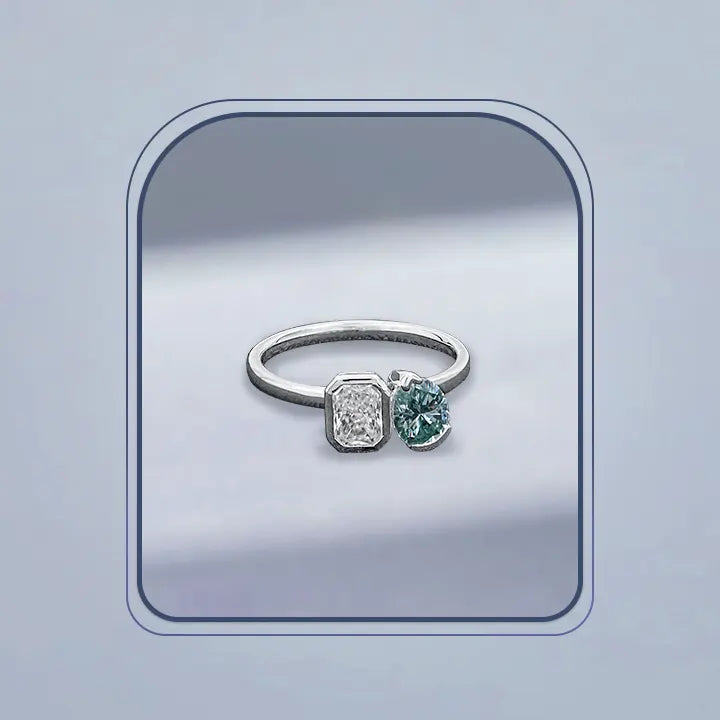
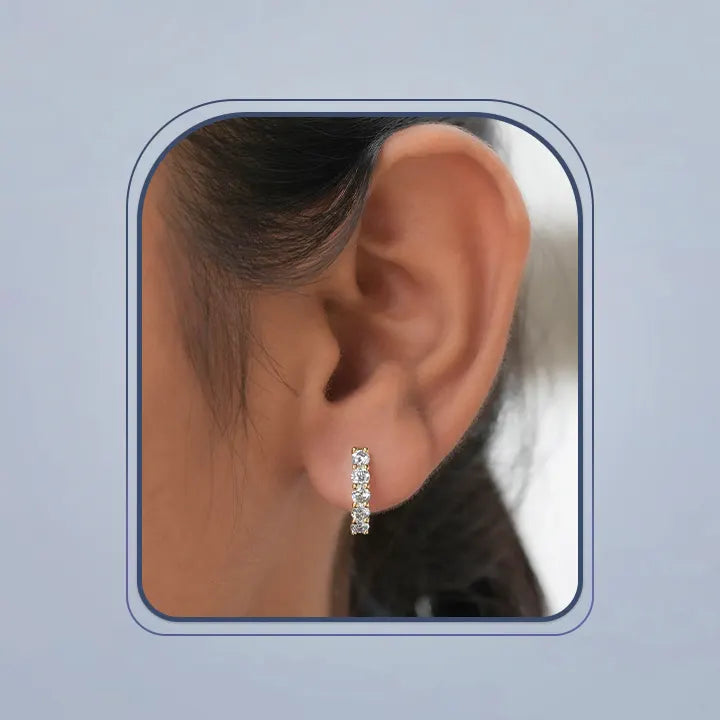
 Five Stone Ring
Five Stone Ring
 Pave band
Pave band
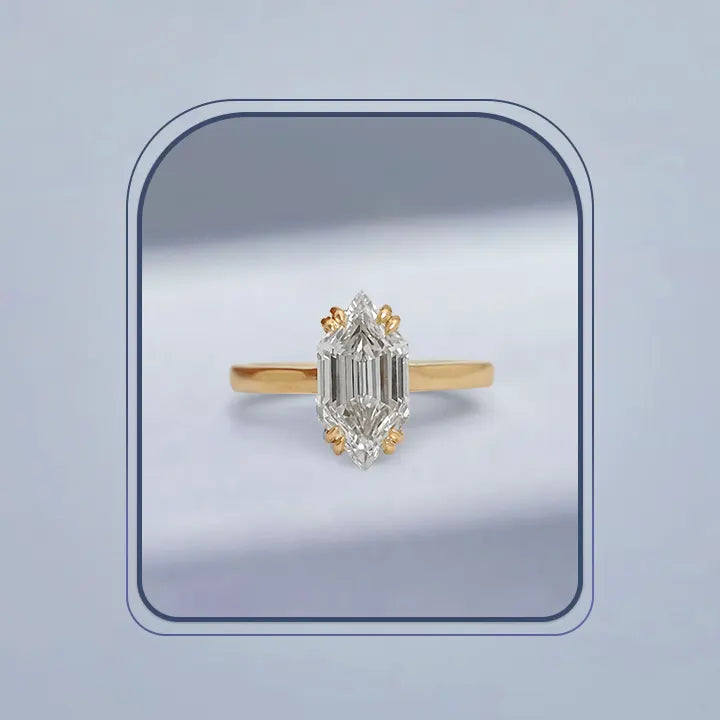
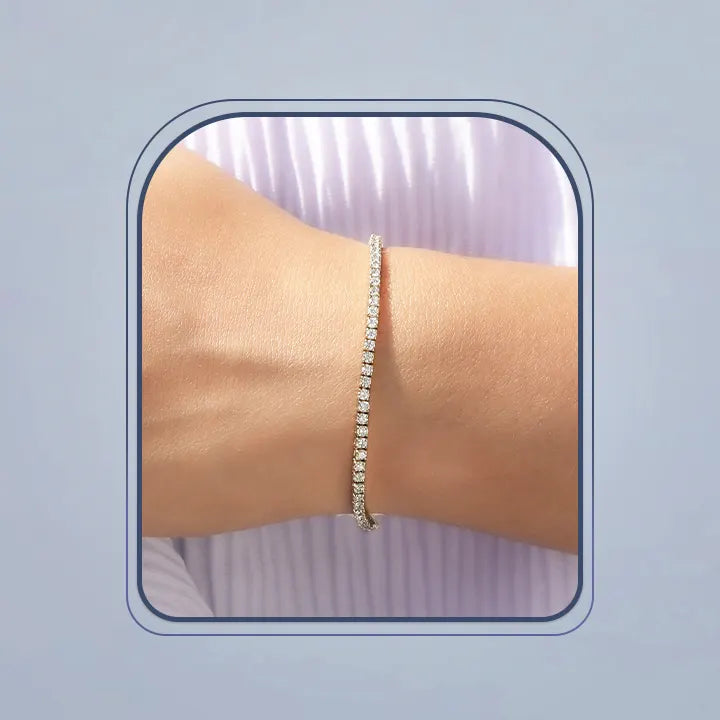
![[Prong settings in rings to know before purchase it]-[golden bird jewels]](http://www.goldenbirdjewels.com/cdn/shop/articles/Blog-Prong_Settings_In_Rings_1.webp?v=1717584025&width=5000)
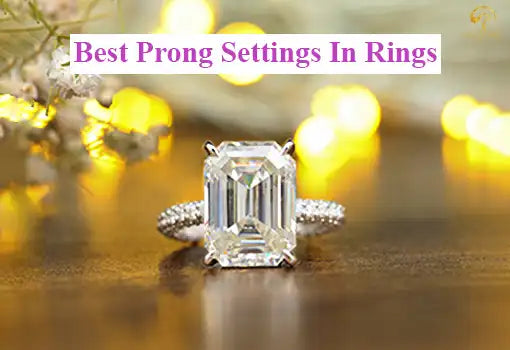






![[Which hand to wear a promise ring]-[Goldenbird Jewels]](http://www.goldenbirdjewels.com/cdn/shop/articles/Which_hand_to_wear_a_promise_ring_1024x1024.webp?v=1735388893)
![[How To Care For Your Moissanite Engagement Ring]-[Goldenbird Jewels]](http://www.goldenbirdjewels.com/cdn/shop/articles/banner_image_1_1024x1024.jpg?v=1735364626)

![Image of engagement ring and wedding band with couple indulging in romance at the beach, [Text] Engagement ring and wedding band, whiich goes first](http://www.goldenbirdjewels.com/cdn/shop/articles/Banner_Image_2_1024x1024.webp?v=1735283814)


